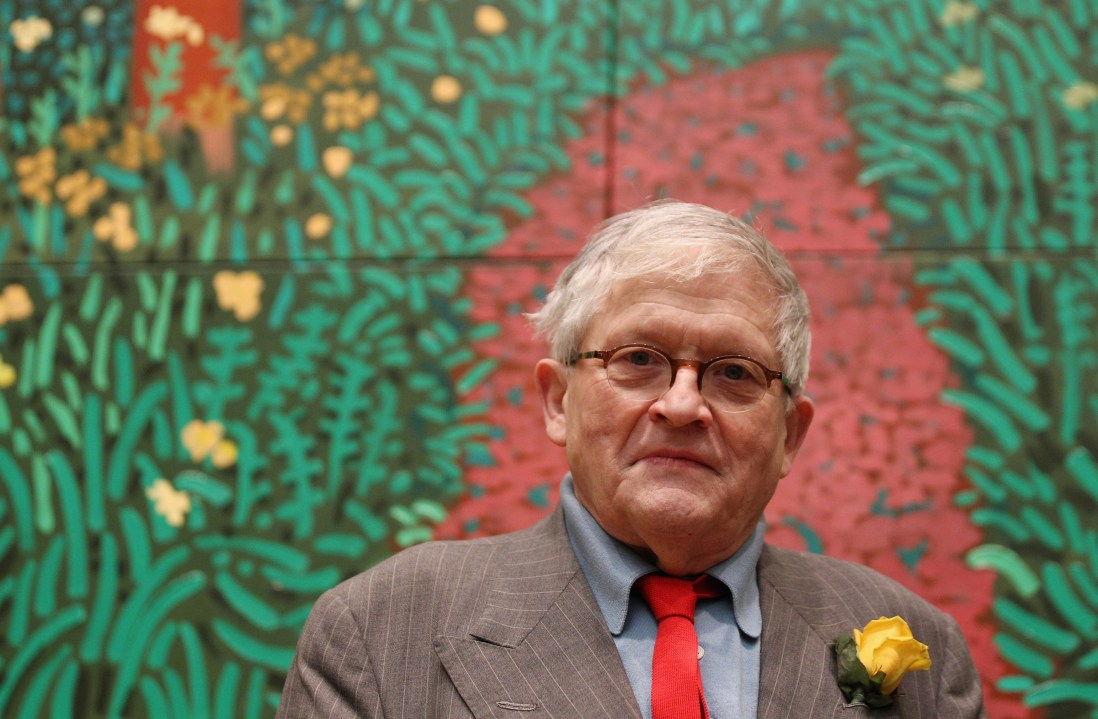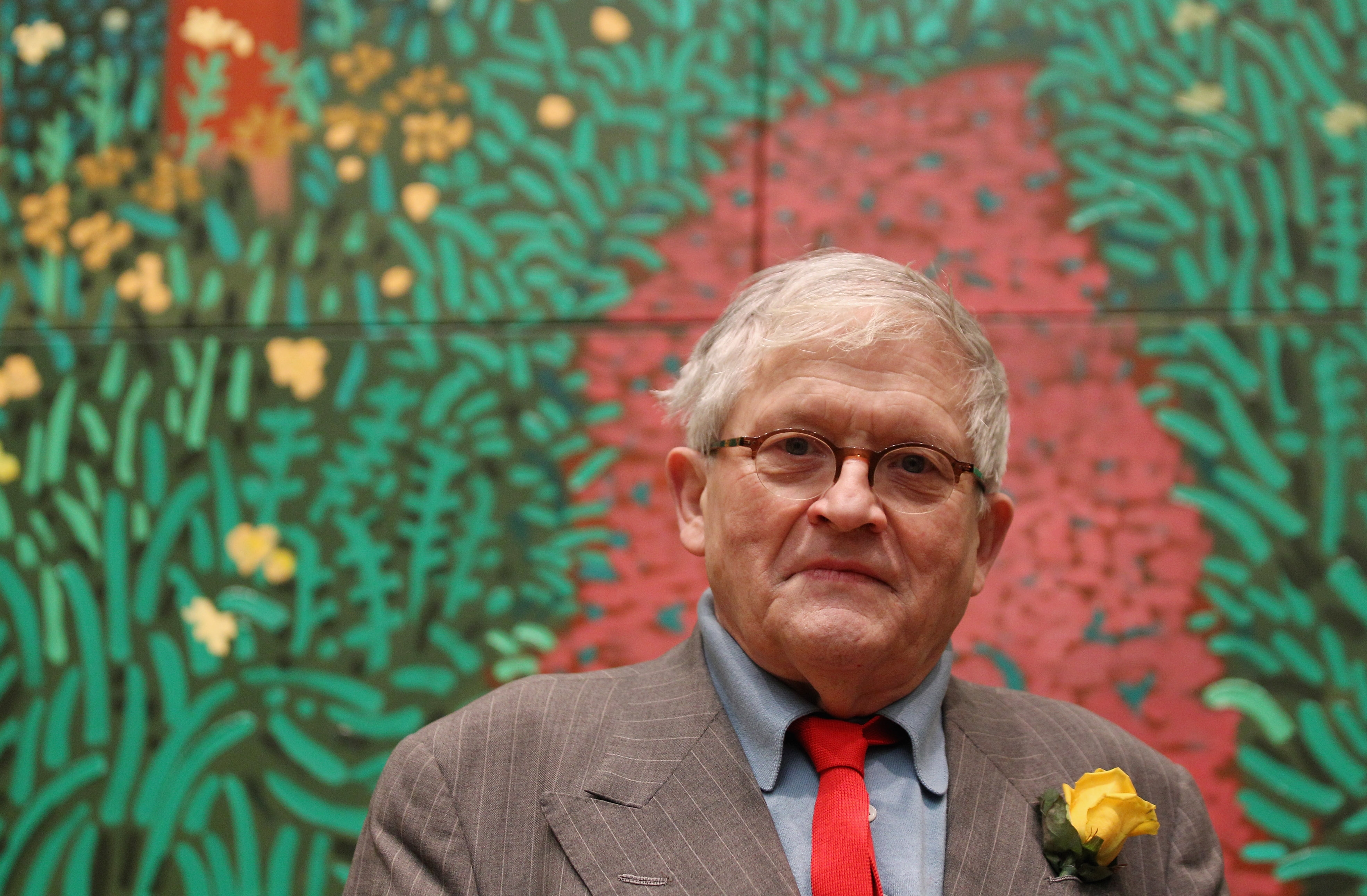I began my week with a trip to Bridlington, the closest seaside town to my childhood home. ‘Brid’, as it’s known to the locals, has a special British charm, comprising miles of unspoilt beach, beach huts, a pretty little harbour, fish-and-chip shops galore, rows of guest houses and The Expanse, a splendid old-fashioned hotel. The council are, however, missing a trick. Brid’s main fishing industry these days is lobsters, as delicious as any you will ever taste. You wouldn’t know it, however, as, apart from a few expensive ones kept in tanks at the Blue Lobster on the harbour, they all go to Europe. So, come on Brid, how about an annual Lobster Festival?
I was in Bridlington to talk to Margaret Hockney, David’s sister. A small lively woman who, like her brother, is profoundly deaf, she is also an artist, specialising in computer-generated designs, and it was she who introduced David to the Brushes App on the iPhone, with which he has since made so many memorable drawings. Hockney’s studio is amazing, a vast industrial warehouse with a floorspace of thousands of square feet, the walls hung with his huge colourful canvases, and screens dotted about covered with dozens of beautiful charcoal drawings. Because the space is so big, Hockney has bought half a dozen wheelchairs, and it’s an eccentric sight watching him and his various assistants whizzing around the floor in them, often travelling backwards.
If David Hockney is Bridlington’s most famous living son, then the contender for ‘most famous deceased son’ has to be William Kent, architect of the interiors of Houghton Hall, Norfolk, where I travelled to next to see the exhibition of pictures there on loan from the Hermitage. These were collected by Britain’s first prime minister, Robert Walpole, who had amassed a great fortune. They included works by Rembrandt, Veronese, Poussin and Rubens, among countless others. Unfortunately his grandson, Lord Orford, a profligate spender and gambler, ended up with debts of over £40,000 and was obliged to bail himself out by selling off the entire collection to Catherine the Great of Russia. Now, his descendant David, 7th Marquess of Cholmondeley, has pulled off the extraordinary coup of persuading the Hermitage to loan back 40 of the original paintings, which have been hung in their original settings. Wow factor: 100.
Driving back to London I was sickened to hear on the radio about the damage being done to world heritage sites in Syria. My daughter and I spent a wonderful week there a few years ago and marvelled at the beauty of Palmyra. Wherever we went, we received such delightful hospitality from the Syrian people, and I am filled with sadness at the reports of the deaths of tens of thousands of people in this beautiful country. I also feel a little guilt as my grandfather, Sir Mark Sykes, was a signatory of the Sykes-Picot agreement, which is at the root of so many of the troubles in the Middle East today.
London is full of surprises, and one of them is to be found in Docklands, not far from the Olympic Park. The House Mill on the River Lea is a perfectly preserved piece of 18th-century London, where grain was ground for use in the distilling of gin on nearby Three Mills Island. Photographing it for World of Interiors, I was struck not just by its beauty but also by the dedication of the volunteers who work so hard week in, week out to preserve it for posterity, and who hope eventually to get part of it up and running again.
Gin produced at that date would have been drunk neat. The dry martini was not invented till one hundred years later. This to me is the king of cocktails and has got me into many scrapes, the most recent of which marked the end of my week. I was out for dinner with some American friends, including the New York talkshow host Jimmy Fallon. In spite of my having recited to him Dorothy Parker’s famous quatrain
I like to have a martini,
Two at the very most.
After three I’m under the table,
After four I’m under my host
he ordered a third Martini for both of us. Having heard about my song about not being invited to Nicky Haslam’s party, he persuaded me that I should sing for him, which is how I came to be perched on a piano stool in Claridges, at 12.30 a.m., singing to my friends, as well as to a number of bemused-looking strangers. These included a woman of a certain age sitting right next to the piano, nursing, yes, you’ve guessed it, a large martini. It’s lucky Jimmy didn’t order me a fourth one, or I might have been under her.







Comments